#nanoscience
Text
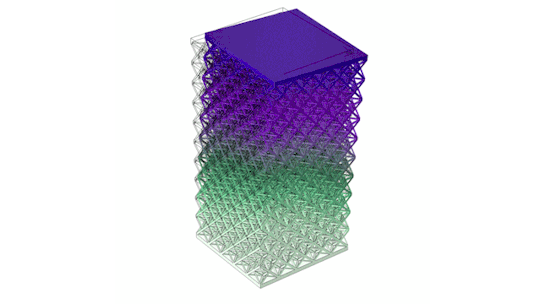
Metamaterials are products of engineering wizardry. They are made from everyday polymers, ceramics, and metals. And when constructed precisely at the microscale, in intricate architectures, these ordinary materials can take on extraordinary properties.
With the help of computer simulations, engineers can play with any combination of microstructures to see how certain materials can transform, for instance, into sound-focusing acoustic lenses or lightweight, bulletproof films.
But simulations can only take a design so far. To know for sure whether a metamaterial will stand up to expectation, physically testing them is a must. But there’s been no reliable way to push and pull on metamaterials at the microscale, and to know how they will respond, without contacting and physically damaging the structures in the process.
Now, a new laser-based technique offers a safe and fast solution that could speed up the discovery of promising metamaterials for real-world applications.
The technique, developed by MIT engineers, probes metamaterials with a system of two lasers — one to quickly zap a structure and the other to measure the ways in which it vibrates in response, much like striking a bell with a mallet and recording its reverb. In contrast to a mallet, the lasers make no physical contact. Yet they can produce vibrations throughout a metamaterial’s tiny beams and struts, as if the structure were being physically struck, stretched, or sheared.
The engineers can then use the resulting vibrations to calculate various dynamic properties of the material, such as how it would respond to impacts and how it would absorb or scatter sound. With an ultrafast laser pulse, they can excite and measure hundreds of miniature structures within minutes. The new technique offers a safe, reliable, and high-throughput way to dynamically characterize microscale metamaterials, for the first time.
“We need to find quicker ways of testing, optimizing, and tweaking these materials,” says Carlos Portela, the Brit and Alex d’Arbeloff Career Development Professor in Mechanical Engineering at MIT. “With this approach, we can accelerate the discovery of optimal materials, depending on the properties you want.”
Portela and his colleagues detail their new system, which they’ve named LIRAS (for laser-induced resonant acoustic spectroscopy) in a paper appearing today in Nature. His MIT co-authors include first author Yun Kai, Somayajulu Dhulipala, Rachel Sun, Jet Lem, and Thomas Pezeril, along with Washington DeLima at the U.S. Department of Energy’s Kansas City National Security Campus.
Keep reading.
Make sure to follow us on Tumblr!
13 notes
·
View notes
Photo

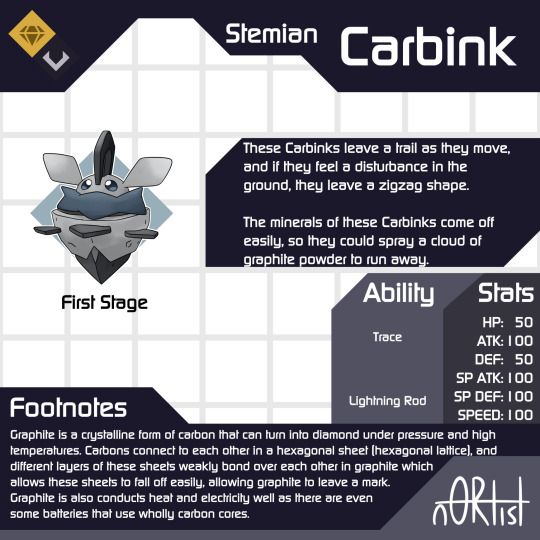

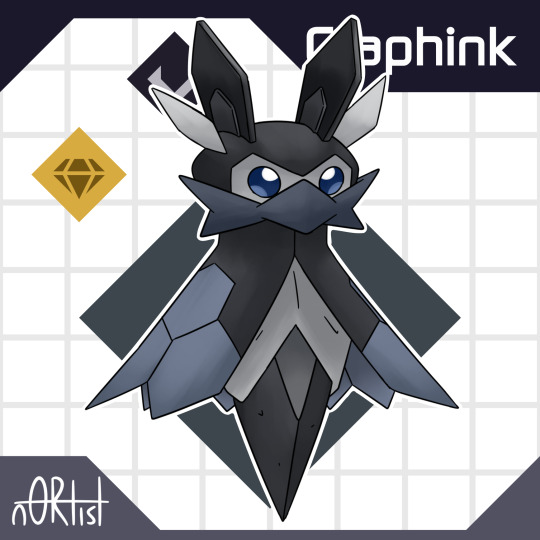

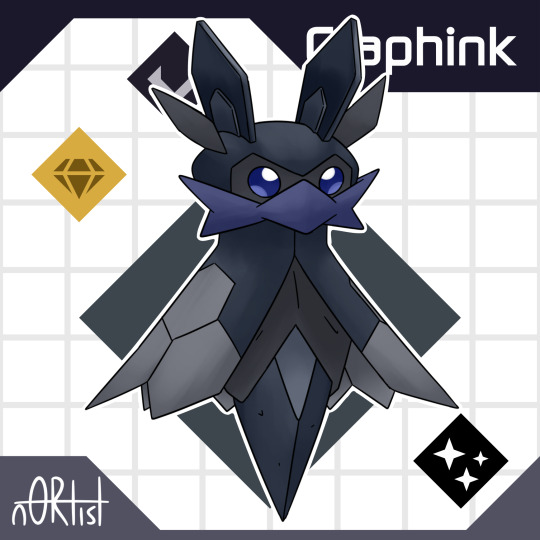
This was based off of a #STEMARegional submission by @Ringu_u on Twitter that I selected to include in my region.
I also gave this Carbink an evolution based off of graphene, a single layer of double-bonded carbons.
As with any regional mons that deal with canon ones, these designs are separate from the region, and the Stema Region is not dependent on canon mons.
This is a Carbink that was originally about seismographs and detection of disturbances in the ground. Seismographs often use a pen (or through creative liberty, a pencil) to record any disturbances. Later, a more direct reference to graphite was made where graphite is crystallized carbon, turning into diamond under heat and pressure. Carbon links to itself in sheets and there is a weak Van der Waals force between the sheets. It is so weak that sheets of carbons can come out of the graphite, allowing it to leave a mark behind.
Carbink (Rock/Dark): These Carbinks leave a trail as they move, and if they feel a disturbance in the ground, they leave a zigzag shape. The minerals of these Carbinks come off easily, so they could spray a cloud of graphite powder to run away.
Graphink (Rock/Dark): Graphinks wear a super thin coat which allows them to make little to no sound as they zip around in the dark. Graphinks scout the wild to detect danger which is when they would zigzag back to whoever they are loyal to to warn them.
#pokemon#art#fakemon#science#physics#carbon#graphite#education#stem#Logic & Passion#steam#oc#regional variant#carbink#nanoscience#graphene#regional evolution
117 notes
·
View notes
Text


exam season
26 notes
·
View notes
Text
Using a tiny metal coil controlled by a magnetic field, a nanobot helps a sluggish sperm reach an egg and fertilize it. This is an experimental technique developed by researchers from the German Institute for Integrative Nanosciences to overcome some forms of male infertility.
3 notes
·
View notes
Text
7th Edition of World Nanotechnology Conference & Nanotechnology-2023

Magnus Group has immense pleasure in inviting you to its HYBRID EVENT “7th Edition of World Nanotechnology Conference” (Nanotechnology 2023) slated during September 25-27 at Valencia, Spain.
The global consortium will highlight the theme “MINI: Multilateral Inquisitions in Nanotech Innovations.”
Nanotechnology Conferences 2023 (Hybrid Event) takes advantages in welcoming the participants to share their vision with the experts from Nanotechnology, Chemistry, Physics and Material Science from across the world. With powerful eminence on innovative approaches, this materials conference gives an opportunity for scientists and researchers in operation in various areas to learn the new views that might facilitate them advance their skills and form new participation.
The Scientific Committee of Nanotechnology Conference 2023 is actively developing an engaging schedule that encompasses the diverse and captivating aspects of Nanoscience and nano chemical science. The Nanotechnology Event will feature keynote speakers, oral presentations, poster sessions, discussion forums, and workshops, providing a platform for researchers to present their latest findings to a broad audience. Attending this Upcoming Nanotechnology Events presents a remarkable opportunity for individuals to exchange information, network, and engage with other professionals in the field of Nanotechnology Conference 2023.
Nanotechnology Conferences, Nanomaterials Confernces, Nanotechnology Conference, Nanoscience Conference, Nanotechnology summit, Nanomaterials Summit, Nanoscience Summit, Nanomaterials Conference, Nanoscience Conferences, Nanotechnology Event, Nanotechnology Conference Valencia, Nanotechnology Conferences 2023, Nanomaterials Congress, Nanotechnology Meetings, Nanoscience Webinar, Nanotechnology Conference 2023, Nanomaterials Workshop, International Nanotechnology meet, science conference, Nanoscience, Nanotechnology, nanooptics, nano chemical science, nanomaterials, green nanotechnology, wet nanotechnology, nanomedicine, materials conference, Nanoconference 2023, materials conference 2023, physics conference 2023, science conference 2023, science and technology, 2023 conferences, Nanotechnology Conference Spain, Upcoming Nanotechnology Events, Upcoming Nanoscience Conferences, Nanotechnology Conference 2023
Reach us at:
Contact Email: [email protected]
Phone: +1 702 988-2320
WhatsApp: +1 779 429-2143
Dates: September 25-27 | 2023
Venue: Olympia Hotel| Events & Spa
Carrer Mestre Serrano| 5| 46120 Alboraia|
Valencia| Spain
Website: https://nanotechnology.magnusconferences.com/
Abstract submission: https://nanotechnology.magnusconferences.com/submit-abstract
Registration: https://nanotechnology.magnusconferences.com/register
Social Media Link:
Facebook: https://www.facebook.com/NanotechnologyConfer
Twitter: https://twitter.com/Nano_congress
Organiser:
Magnus Group LLC - https://www.magnusgroup.org/
Conference Manager: Sonia Edwin
Organiser Address: Magnus Group LLC
150 South Wacker Drive #2400 Chicago| IL 60606| USA
2 notes
·
View notes
Text

🔬 Unlock Your Potential with @masterclassofcl in Nanotechnology at IIT Roorkee! 🎓 Explore the intricate world of nanoscience, prepare for exciting career prospects, and experience hands-on learning.
Elevate your future now! Apply for the Integrated B.Tech-M.Tech program at IIT Roorkee. 🚀 www.themasterclass.co.in/register
#TheMasterClass#Letsconnect#Nanotechnology#IITRoorkee#ScienceEducation#Innovation#TechEducation#ApplyNow#NanotechnologyEducation#ScienceCareers#STEMEducation#Nanoscience#TechInnovation#HigherEducation#FutureLeaders#NanotechProgram
0 notes
Text
From Smartphones to Medicine: Hidden Impacts of Nanotechnology in Everyday Life
1. Introduction to Nanotechnology
Nanotechnology is a rapidly expanding field that has the potential to revolutionize various industries and improve our daily lives. Despite its complex and scientific nature, nanotechnology is already present in many of the products and technologies we use on a regular basis. From electronics and healthcare to renewable energy and environmental applications,…
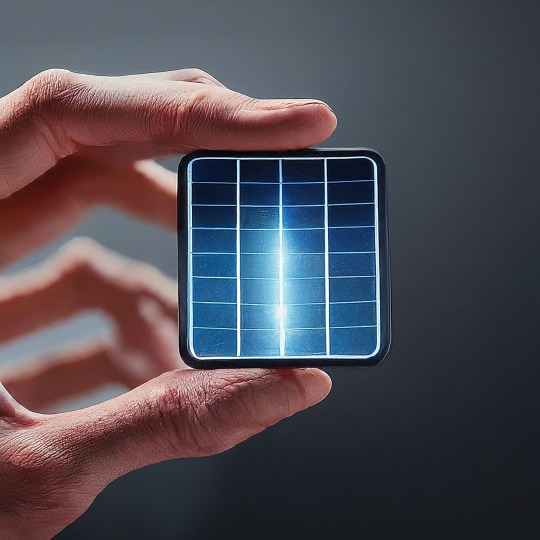
View On WordPress
0 notes
Text

𝐍𝐚𝐧𝐨𝐦𝐚𝐭𝐞𝐫𝐢𝐚𝐥𝐬: Nanoscience focuses on understanding the properties and behavior of nanomaterials, which can exhibit unique properties due to their small size and high surface area.
𝐈𝐧𝐭𝐞𝐫𝐝𝐢𝐬𝐜𝐢𝐩𝐥𝐢𝐧𝐚𝐫𝐲 𝐍𝐚𝐭𝐮𝐫𝐞: Nanoscience and nanotechnology draw from multiple disciplines, including physics, chemistry, biology, engineering, and materials science, to explore phenomena at the nanoscale.
Visit @ https://symbiosisonlinepublishing.com/nanoscience-technology/
#nanoscience#technology#nanosciencetech#nanostructures#nanometerscales#transmissionelectronmicroscopy#nanoscalematerials#nanomedicine#carbondots#nanofabrication#nanolithography#photonics#Macroscope#spintronics#nanomotor#insulintherapy#molecularmachine#nanodevices#journal#journals#pubmed#peerreview#peerreviewed#OpenAccess#openaccessjournal#symbiosisonlinepublishing
1 note
·
View note
Text
On the cover: Even the addition or subtraction of a single atom can influence the chemical, physical, and biological properties of nanoscale materials. Via the artwork You, Me, We Are All Parts of NanoWorld (1 to 100 nm), Todd Siler and Geoffrey Ozin reveal how a finite number of 118 known elements, at the nanoscale, can be used to create an infinite number of nanomaterials and practical applications to help us address many of today’s most urgent sustainability challenges. It manifests intuitions and insights into nature’s creative potential: we can build a sustainable future at the nanoscale. Cover by Todd Siler and Geoffrey Ozin, www.ArtNanoInnovations.com, courtesy of the artist. ©Todd Siler
0 notes
Text
Master of Nanoscience & Nanotechnology (MNT)

A strong foundation in materials chemistry, solid state physics, an introduction to biotechnology, as well as novel techniques and approaches to cancer diagnostics and targeted therapeutics are all provided through the Master's Program in Nanoscience and Nanotechnology. The course emphasizes materials chemistry, microelectronics, photonics, and their applications in biomedicine and energy.
0 notes
Link
F-Type ATP synthase, a catalytic complex of proteins, synthesizes adenosine triphosphate (ATP), the energy currency of living cells. A lot of ambiguity exists over the rotational mechanism of this spinning enzyme. Now, researchers from Japan have demonstrated how each chemical event of ATP metabolism is linked to the ‘stepwise’ rotational movement of the F1 component of ATPase. Especially, they clarified the angle of shaft rotation before ATP-cleavage, a long-standing enigma, to be 200°.
0 notes
Text
Congratulations to Moungi Bawendi, the Lester Wolfe Professor of Chemistry at MIT — newly minted Nobel laureate in chemistry! 🥇
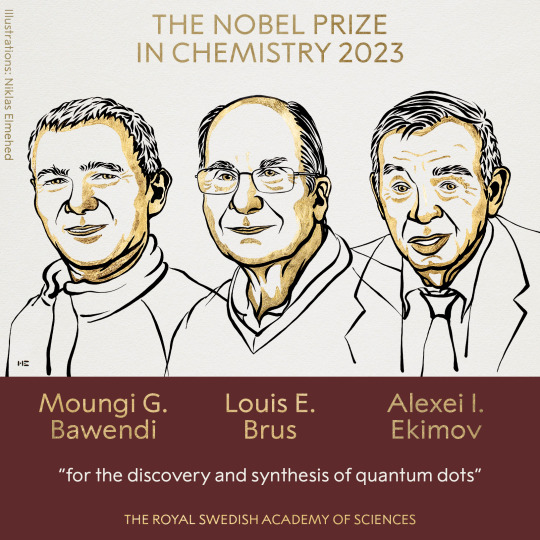
MIT chemist Moungi Bawendi shares Nobel Prize in Chemistry
For his work on techniques to generate quantum dots of uniform size and color, Bawendi is honored along with Louis Brus and Alexei Ekimov.

Anne Trafton | MIT News
Moungi Bawendi, the Lester Wolfe Professor of Chemistry at MIT, has won the Nobel Prize in Chemistry for 2023. He will share the prize with Louis Brus of Columbia University and Alexei Ekimov of Nanocrystals Technology.
Bawendi is a pioneer in the development of quantum dots: tiny particles of matter that emit exceptionally pure light. These particles, a special type of semiconducting nanocrystals, have been incorporated into technologies such as biomedical imaging and computer and television displays.
In its announcement this morning, the Nobel Foundation, cited Bawendi for work that “revolutionized the chemical production of quantum dots, resulting in almost perfect particles.”
Quantum dots consist of tiny particles of semiconductor material that are so small that their properties differ from those of the bulk material; they are governed in part by the laws of quantum mechanics that describe how atoms and subatomic particles behave. When illuminated with ultraviolet light, the dots fluoresce brightly in a range of colors determined by the sizes of the particles.
In 1993, Bawendi and his students were the first to report a method for synthesizing quantum dots while maintaining precise control over their size. Since then, he has also devised ways to control the efficiency of the dots’ light emission and to eliminate their tendency to blink on and off, making them more practical for applications in many fields.
Make sure to follow us on Tumblr!
4 notes
·
View notes
Text
youtube
0 notes
Text
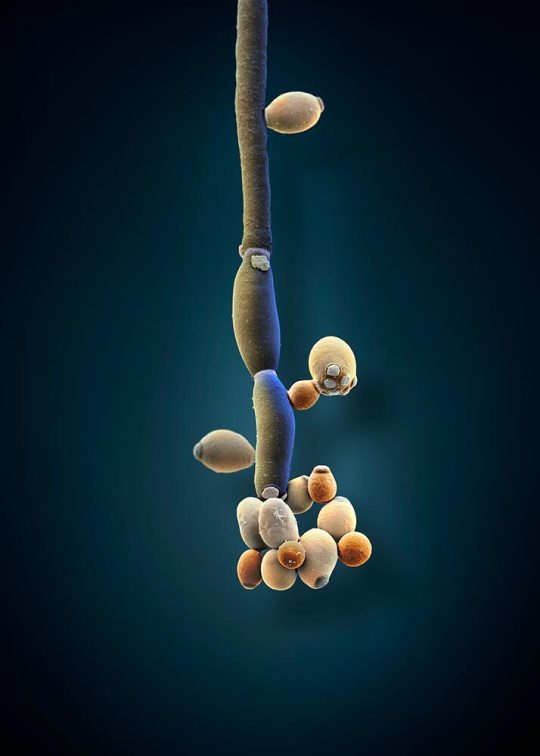
Studies show that patients with irritable bowel syndrome tend to have high levels of the fungus Candida albicans (illustrated here) in their gut. In recent years, scientists have started to take a closer look at how the fungi in your gut microbiome affect your health.
COLORIZED SCANNING ELECTRON MICROSCOPE IMAGE BY MARTIN OEGGERLI
UNIVERSITY HOSPITAL BASEL, SWISS NANOSCIENCE INSTITUTE, BASEL
#martin oeggerli#colorized scanning electron microscope#photographer#micro photography#university hospital basel#swiss nanoscience institute#basel#switzerland#irritable bowel syndrome#candida albicans#fungus#nature#microbiome#national geographic
10 notes
·
View notes
Text
Master of Nanoscience & Nanotechnology (MNT) | Graduate Program
In conclusion, the Master of Nanoscience & Nanotechnology program equips students with the knowledge and practical skills to excel in the rapidly evolving field of nanotechnology. Graduates play a crucial role in advancing scientific knowledge, developing innovative nanotechnologies, and addressing societal challenges through the manipulation and control of matter at the nanoscale.
0 notes
